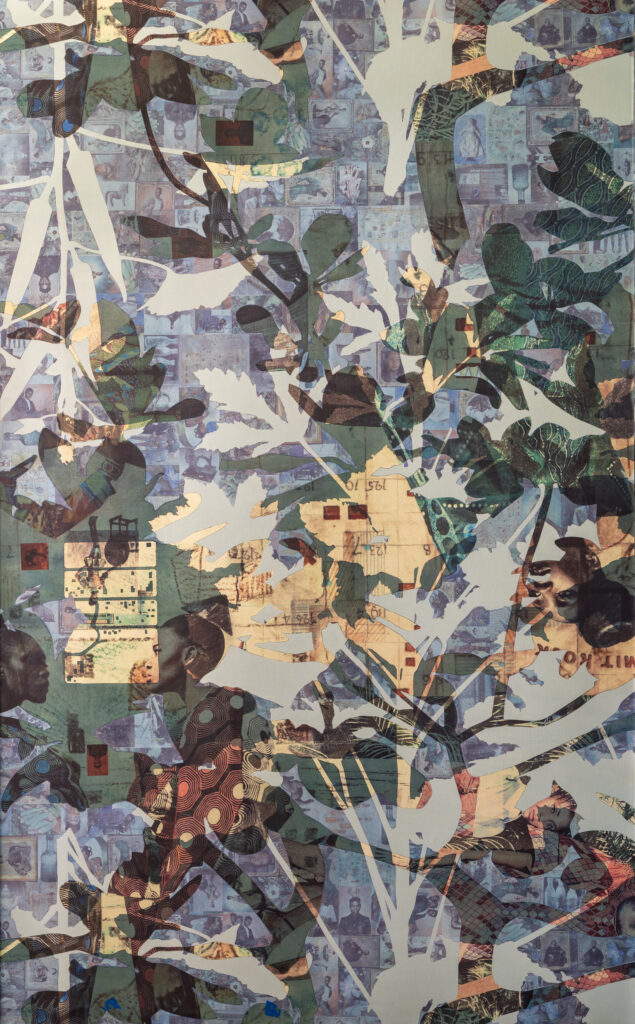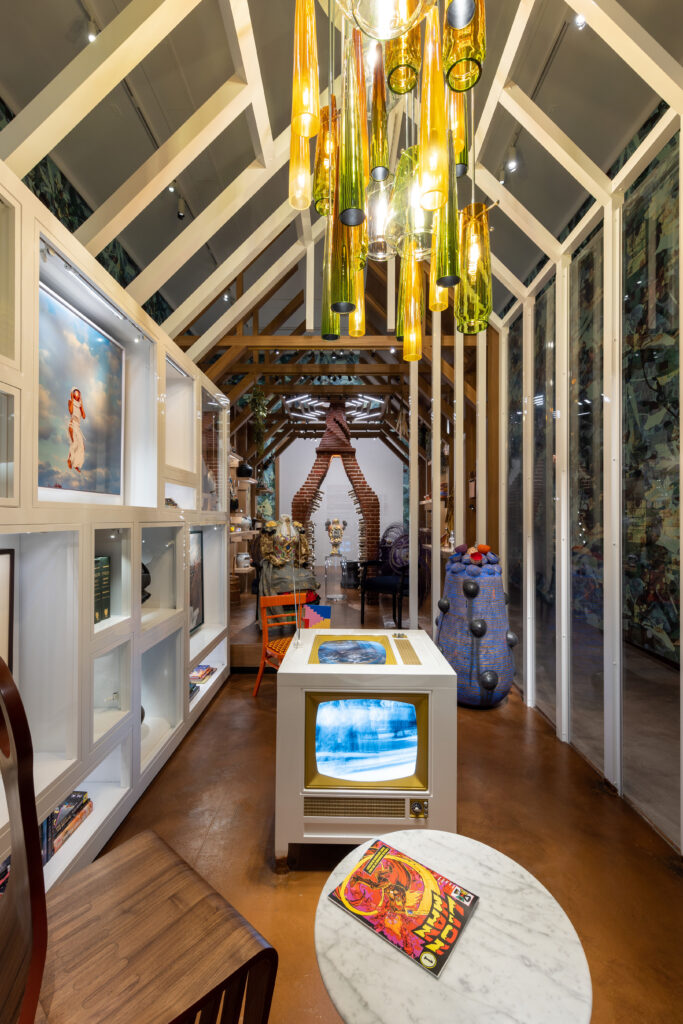Retelling the History of Seneca Village Through a Reimagined Afro-futurist Period Room at The Met

Earlier this month, The Met opened a first-of-its-kind period room inspired by domestic spaces of community members, predominantly African Americans who once lived in Seneca Village. Titled after Virginia Hamilton's legendary retellings of the Flying African tale Before Yesterday We Could Fly, the ongoing presentation embraces the African and African diasporic belief in the past, present, and future interconnectivity, known as Afrofuturism.
The space, which is outfitted with a kaleidoscope of works from The Met's collection, some recently acquired, engages generations of African diasporic creativity through visual, sound, and storytelling. From Bamileke beading and 19th-century American ceramics to contemporary art and design that embraces rich and diverse traditions, the Afrofuturist Period Room presents a dual representation of communal beliefs and authenticity in American history.

Max Hollein, the Museum's Marina Kellen French Director says "The many collaborations with contemporary artists, new acquisitions, and works commissioned specifically for this project will have a lasting impact on The Met's collection, expanding our holdings of contemporary decorative art, and demonstrating the Museum's continued commitment to engaging with and supporting extraordinary artists of our time."
The show transforms a 19th-century domestic aesthetic into a speculative future home for residents of Seneca Village whose lives were unfairly cut short due to eminent domain from the state. Recognizing this injustice, curators ask: What if this community was given a chance to grow?
Seneca Village was once obtained by a community primarily made up of free Black tenants and landowners. From the 1820s to the 1850s, the community thrived just a few hundred yards west of The Met's current location. The village was demolished in 1857 by the City of New York, which used executive authority to seize land for the construction of Central Park. This was done to make way for a different kind of space, designed for a completely different type of community and for public use later becoming the country's first major landscaped public park.
Like all of The Met's period rooms, this exhibition is a fabrication of a domestic space, putting together furnishings and objects to create a scene of a still moment. Referring back to Hamilton's story that celebrates enslaved people's imagination, creative uses of flight, and the importance of spirituality and mysticism to Black communities; Before Yesterday We Could Fly is the pinnacle of the creative paradigm that highlights Black creativity and self-determination. The room commemorates several new acquisitions explicitly made for the project. Ini Archibong, Cyrus Kabiru, Roberto Lugo, Zizipho Poswa, and Tourmaline are some of the represented artists. Njideka Akunyili Crosby, Fabiola Jean-Louis, and Jenn Nkiru also contributed works to the exhibition.
Before Yesterday We Could Fly: An Afrofuturist Period Room is located at Gallery 508 at The Met Fifth Avenue between the central intersection where galleries for Early Modern Europe, Nineteenth-century Britain, and the American Wing meet.
Read, listen to, or watch stories about this project on The Met's website. https://www.metmuseum.org/exhibitions/listings/2021/afrofuturist-period-room

